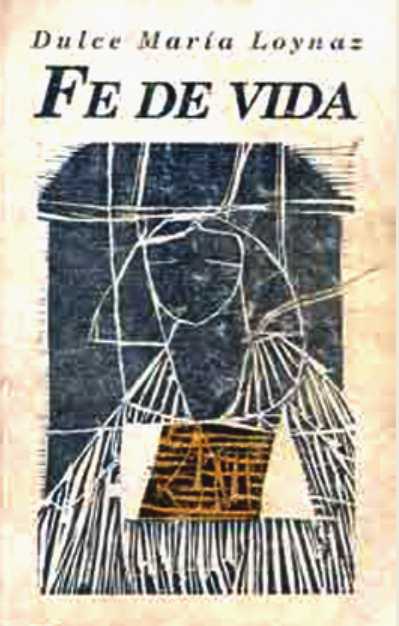4.1.1.16.6 The text “Proof of Life”, by Dulce María Loynaz, 1995

“Fe de vida” belongs more to the memoir genre. It was completed by the author in 1978, but due to the requirement imposed by her that it only be published after her death or after her 90th birthday, which was not met until well into the 1990s, it was not published until 1995.
The book deals with part of the life, both in public and private, of her first love, Pablo Álvarez de Cañas. Urged by her family to sever all ties that united them in reality, she married another man. Many years later, they would reunite and join together in marriage, a marriage that was interrupted by the exile of Pablo, who in turn served as a lucrative social chronicler for a long period during the Republican era.
The text, while precisely intended to narrate episodes from Pablo’s life and vindicate him in the public eye, also constitutes a testament to Loynaz’s life that debunks many of the myths woven around her. In many ways, she was a woman of her time and social class, and she loved in her own way, with fear, as she herself acknowledges, but emerging from her lyrical snail’s path toward the world.
The work has a linear narrative structure, sometimes interrupted by a few episodes. It is not exactly a biography, since part of Pablo’s life spans are lost due to the cessation of communication with the author. However, in a general sense, it draws an adequate overview of the formation of his personality in his country of origin and the vicissitudes that occurred in Cuba, attitudes like brushstrokes that attempt an impressionistic picture of the somewhat complex being that Pablo was, from the evaluative point of view.
Without intending to do so, this work chronicles almost the entire Republican era, told from above: the economic prosperity of the dance of millions, the financial collapse that followed, and some of the events of high society. It only briefly refers to the revolutionary germs that bubbled up at certain moments, with the phrase: “a rebellious student or a bitter worker,” eloquent in its conception of the status quo.
It also reflects a certain incompatibility between his personality, adapted to a lifestyle of joyful aristocracy, and the revolutionary transformations, the essence of which he failed to understand because he did not share the same references as the republican era, but only the urban paradise he inhabited, and not even the most sordid aspect of luxury.
However, this text is authentic in every sense and denotes some influence of revolutionary literature in its colloquial tone and the fact that it somewhat breaks its intimacy and makes a broad segment of potential readers share its reality, even fearing their incomprehension from the perhaps insurmountable distance of almost half a century.








